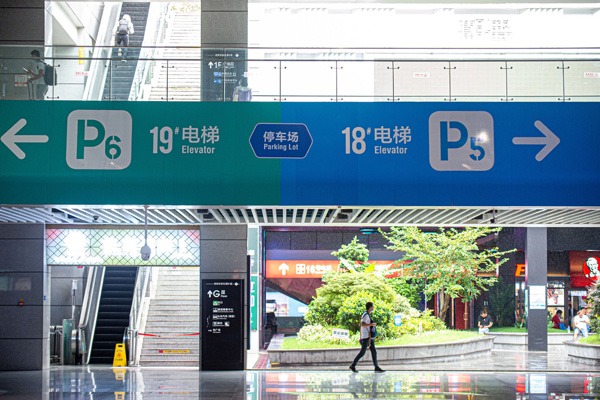big data improves travel in hangzhou

a passenger walks in hangzhou east railway station, on aug 4, 2020. [photo/xinhua]
editor's note: china has undergone profound changes in recent years on its path to becoming a moderately prosperous society. this series tells the stories of some of the changes that have improved people's lives.
hangzhou resident zhang qian, a frequent business traveler between zhejiang's provincial capital and wuxi in neighboring jiangsu province, is happy she can now take a taxi from hangzhou east railway station less than 15 minutes after her arrival instead of enduring the hour's wait she faced before.
"the waiting period has been greatly shortened," the 26-year-old said. "with the waiting area for passengers taking taxis enlarged and more passageways provided, the previous long lines have completely disappeared."
zhang said that newly installed air-conditioners and a ventilation system had also made waiting for a taxi more comfortable.
the improvements are due to the efforts of the station's management authority, which launched a campaign in june to "put passengers first". it has refined management by using big data and grid management in its daily operations.
first built in 1992 and enlarged in 2013, the railway station, in hangzhou's jianggan district, is one of asia's largest train hubs. covering over 400,000 square meters, it handled 71.9 million passenger trips last year.
"we launched a 'digital control cabin' to fully apply and utilize big data resources in improving the railway station's management and efficiency, integrating real-time digital scenarios such as parking, transportation, garbage handling and passenger control into the same platform," said fang xiaohong, party secretary of the station.
"take the parking lots for example. now vehicles can check out within just five seconds thanks to the adoption of contactless parking services and technologies from alipay."
on friday, during e-commerce giant alibaba's apsara conference in the town of yunqi in hangzhou's xihu district, ali cloud released the core technology system for version 3.0 of its city brain, aiming to provide more reliable and updated solutions to urban management authorities dealing with emergencies such as typhoons and thunderstorms.
through the holographic digital technologies it has developed, the system is able to encrypt and integrate two-dimensional and three-dimensional moving and static elements, thus building a virtual "digital metropolis".
based on the new technologies, urban management authorities will be able to emulate and forecast incidents and their likely aftermath, which will support real-time responses.
the technologies are already helping to monitor and control traffic on the 36-kilometer-long hangzhou bay bridge, which links hangzhou and ningbo and handles 48,000 vehicles a day, said zeng zhenyu, ali cloud's general manager for digital and smart industries and research.
if there is a traffic accident on the bridge, the city brain will notice it immediately and provide the best solution to traffic congestion in the quickest and most efficient manner, zeng said.
the city brain was first released at the apsara conference, a digital innovation showcase in hangzhou, in october 2016. at last year's conference, ali cloud announced that it would extend the scope of the system from traffic to more areas of urban management.
-
'nice' to meet you, hangzhou
may 6, 2024

